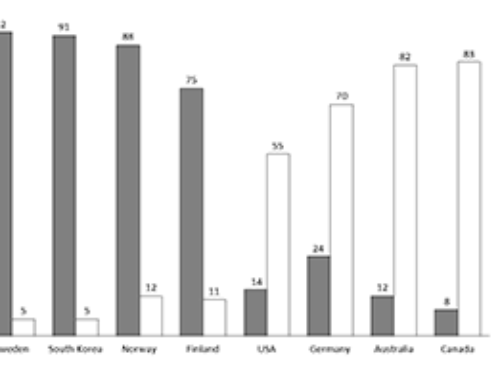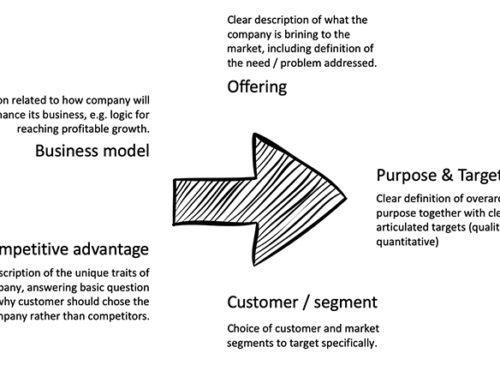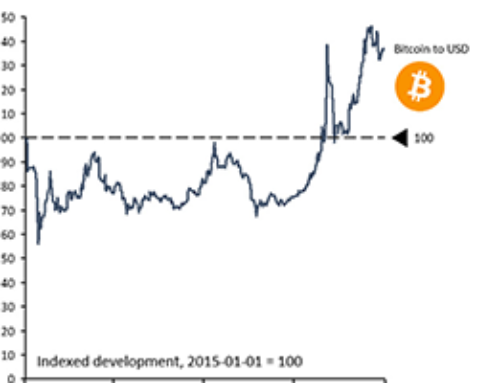We all seem to agree that unemployment is one of the major challenges in modern time. Some might argue that we need to keep unemployment at a certain level and that it never can go done to zero, but that is basically just a discussion and debate regarding level, rather then the direction it needs to move.
Unemployment is measured by Eurostat in a consistent way cross the countries in the European Union through the EU Labour Force Survey (EU-LFS). In the survey the population (15 years and above) are divided into three mutually exclusive and collectively exhaustive groups: persons in employment, unemployed persons and inactive persons (for definitions of the different groups, please see below).
Current average on 10,8%
Unemployment was in average 10,8% in EU (28 countries) 2013. However spread between the different countries is significant where countries such as UK (7,6%), Sweden (8%) and Norway (3,5%) for instance comes in below the average while countries such as Portugal (16,4%), Spain (26,1%) and Greece (27,5%) comes in clearly above the average.
It is easy to realize that unemployment comes with a significant cost for the different countries, more specifically in terms of payouts from the social security system in each of the countries.
The hidden cost
However, there is another cost of unemployment that we need to recognize and reflect on. A cost that potentially is somewhat more hidden compared to the direct costs identified. As unemployment actually means that people are not allowed to productively contribute to the GDP in a country, it actually means that this is a loss of productivity for the whole country. In other words, we are not fully utilizing the capacity at hand, which in turn need to be looked upon as a failure for the society as a whole, rather than for the individuals.
As a simple way of calculating and quantifying this hidden cost we put together two different scenarios. First scenario quantifies the opportunity in reducing unemployment to zero, so basically eradicating unemployment. Of course this is an aggressive scenario, we recognize that, hence a second scenario. The second scenario assumes that any country in the European Union has a maximum of 10% unemployment, consequently meaning a decrease for countries currently above that level (e.g. Portugal and Greece), but no change for countries below that threshold (e.g. Norway and UK). In both scenarios we assume that people returning to employment would not decrease the average GDP per capita in each country.
Between 1 600 and 300 BEUR
The first, and most aggressive, scenario indicates that the total cost of unemployment through lost GDP adds up to incredible 1 600 Billion Euro. Spain alone in this scenario corresponds to GDP loss of 360 Billion Euro, France 236, Italy 217, UK 156 and Germany 150.
In the second scenario, assuming a maximum unemployment of 10% in any country, the total cost of unemployment as measured through lost GDP is 344 Billion Euro. In this scenario countries like UK and Germany lands on zero Euro lost, while Spain alone loses 223 Billion Euro, Greece 44, Italy 39 and Portugal 13.
A call for action
Whatever you believe in terms of optimal rate of unemployment, working forcefully to make it decrease clearly has the potential to significantly impact the economies of the countries in the European Union, 300 Billion Euro is at stake if we manage to reach a situation with maximum unemployment rates of 10%.
The big question is of course how this can be done. While we are convinced that political means need to be leveraged to create the pre-requisites, new tangible and real jobs need to be created in order to have a positive impact of unemployment, and new jobs need to be created through the companies that operate in the region, a clear call for action!
Source: Eurostat
Definition of employed persons and unemployed persons
Employed persons are persons aged 15 years and over who, during the reference week performed work, even for just one hour a week, for pay, profit or family gain or who were not at work but had a job or business from which they were temporarily absent because of something like, illness, holiday, industrial dispute or education and training.
Unemployed persons are persons aged 15-74 who were without work during the reference week, but who are currently available for work and were either actively seeking work in the past four weeks or had already found a job to start within the next three months.





Leave A Comment